Alternative powertrains dominate the bus world
In 2022, 62% of all city buses in Europe were driven with an alternative powertrain. For over ten years, Wim Chatrou of Chatrou CME Solutions has been observing and analysing the European bus market. The two big surprises from 2022 were that Yutong registered the most electric buses across Europe, and Denmark came 4th in the ranking for new electric bus registrations.
***
At the beginning of each year, the bus industry eagerly awaits the figures that provide a detailed insight into the Europe-wide registration figures and thus market shares of buses weighing over 8 tonnes. Since Chatrou started publishing bus industry figures in 2020, he continues to broaden the focus. Last year, we reported that electric buses were booming in Europe. Now his figures provide detailed insights in EU27 + UK + ICE + NO + CH.
When accounting for all powertrain types across the entire European region including the UK, Norway and Switzerland, the number of newly-purchased buses and coaches continues to decline. A total of 27,277 city buses, intercity buses and coaches were sold in 2021, and only 25,658 new buses were sold in 2022. For the city bus segment, Wim Chatrou’s statistics show that 13,434 vehicles were sold in 2022, compared to 15,061 in 2021, marking a drop of -10.8 per cent. In 2022, 8,095 intercity buses were counted in 2022, compared to 8,434 in the previous year, a drop of -4 per cent.
While coach registrations were up slightly in 2022 compared to 2021, they were still down significantly compared to 2019. With 4,129 coaches newly registered in 2022, compared to 3,782 vehicles in 2021, coach sales were up YoY by +9.2 per cent. Looking back over three years, 2022 still saw an overall decrease in coach registrations when compared to 2019. Coach registrations dropped from 9,183 in 2019 to 4,129 in 2022, which marks an overall drop of -55 per cent.
The great news is that 62.5 per cent of all city buses in 2022 had an alternative powertrain. The Clean Vehicle Directive adopted by the European Parliament and the Council in June 2019 is having an effect. While more and more electric buses are being newly registered, hybrid buses, which were seen as a transitional solution, are showing a significant decline: in 2021 there were 3,285 hybrid buses, and in 2022 there are only 2,018, a drop of -38.5 per cent. At the same time, 30 per cent of city buses (BEV, purely battery electric vehicles and FCEV, hydrogen fuel cell electric vehicles) were emission-free in last year’s statistics. Compared to 2020, the number of emission-free city buses (BEV and FCEV) has doubled!
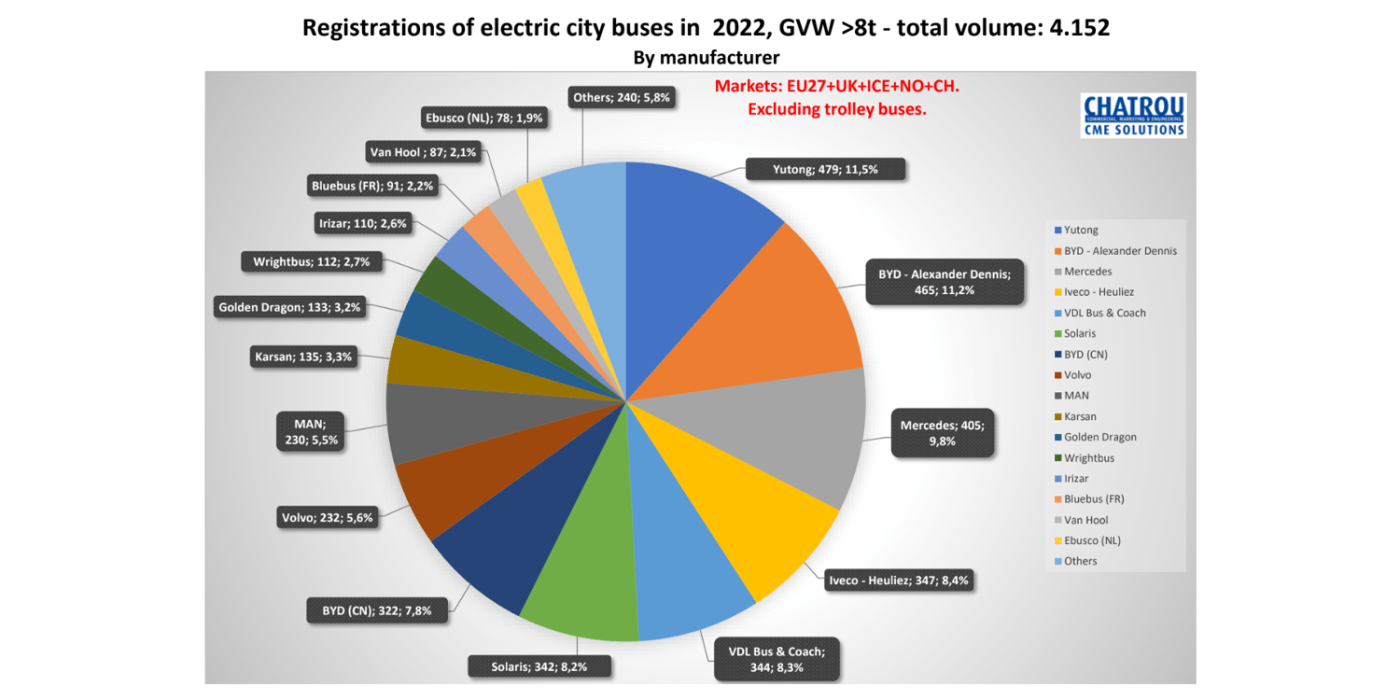
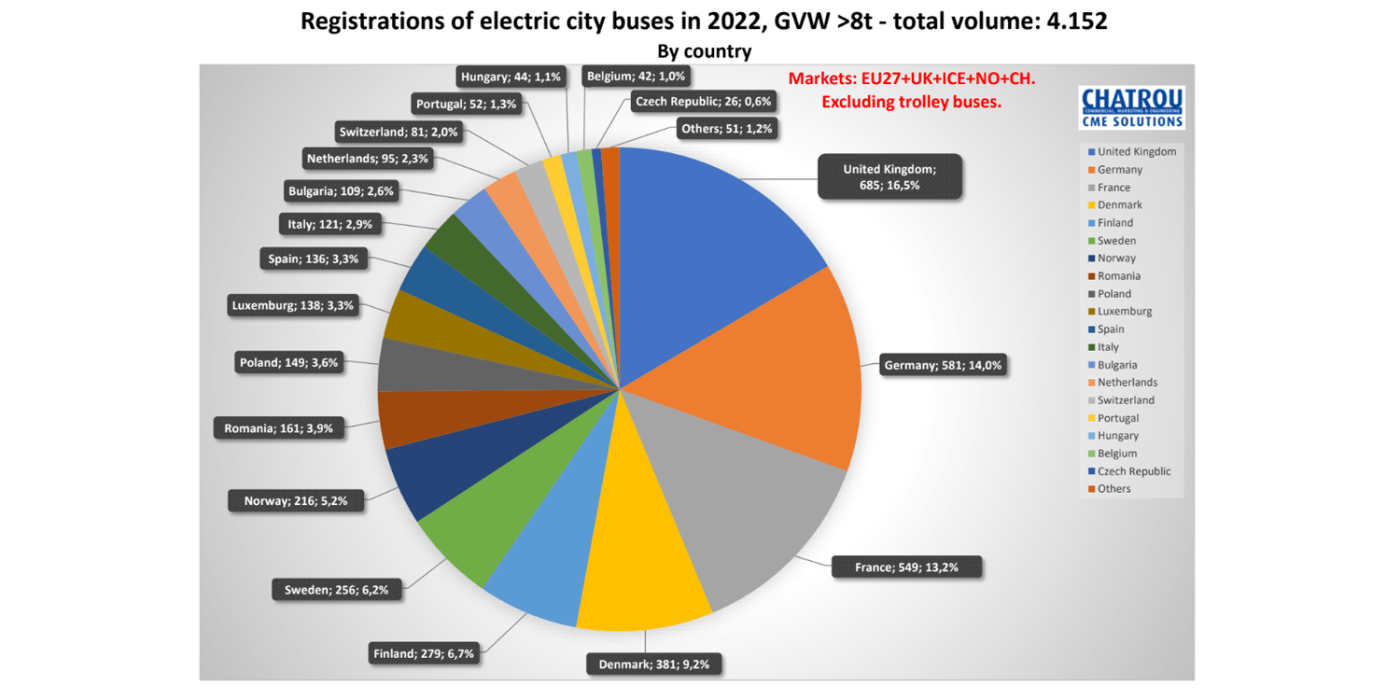
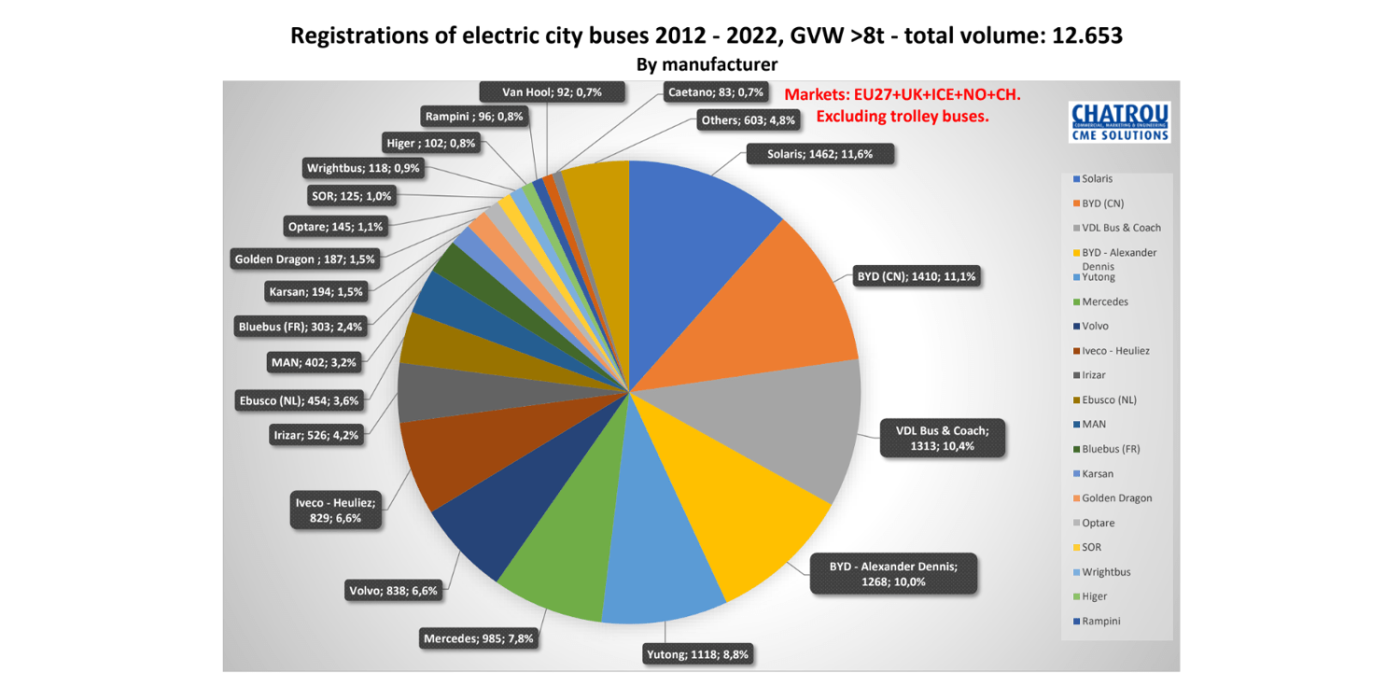
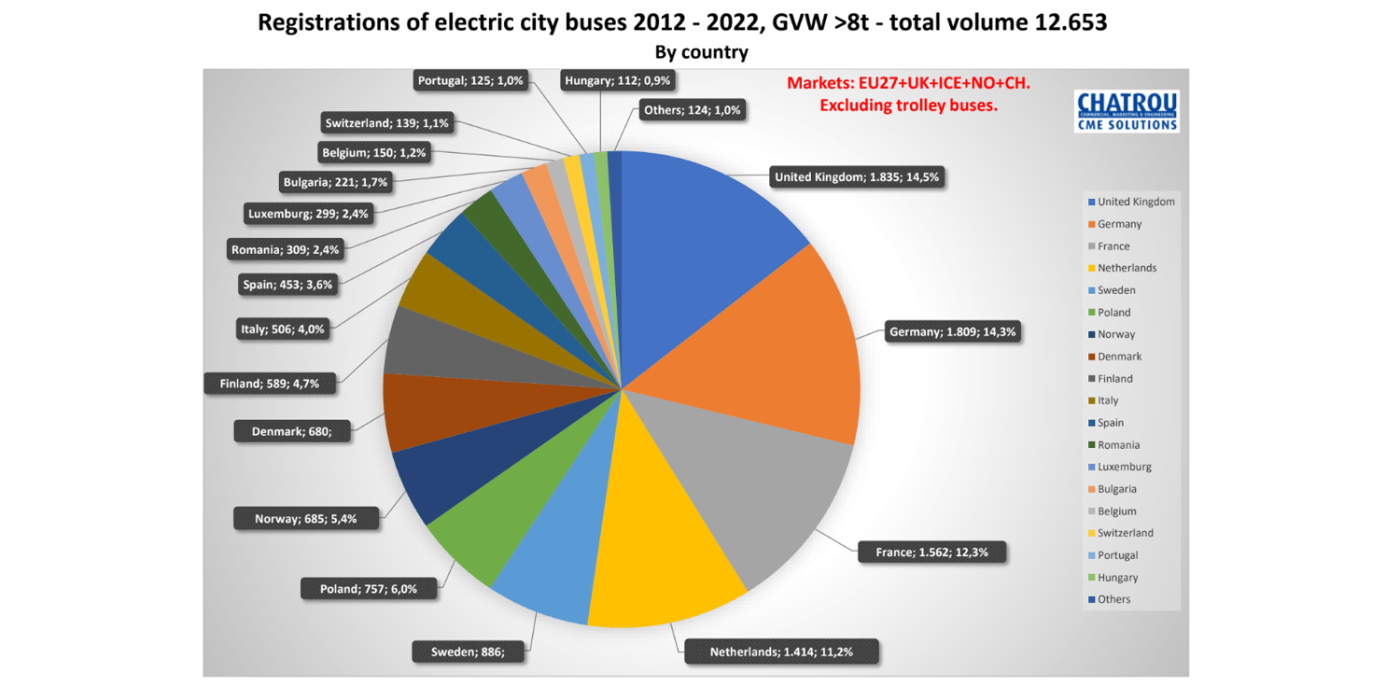
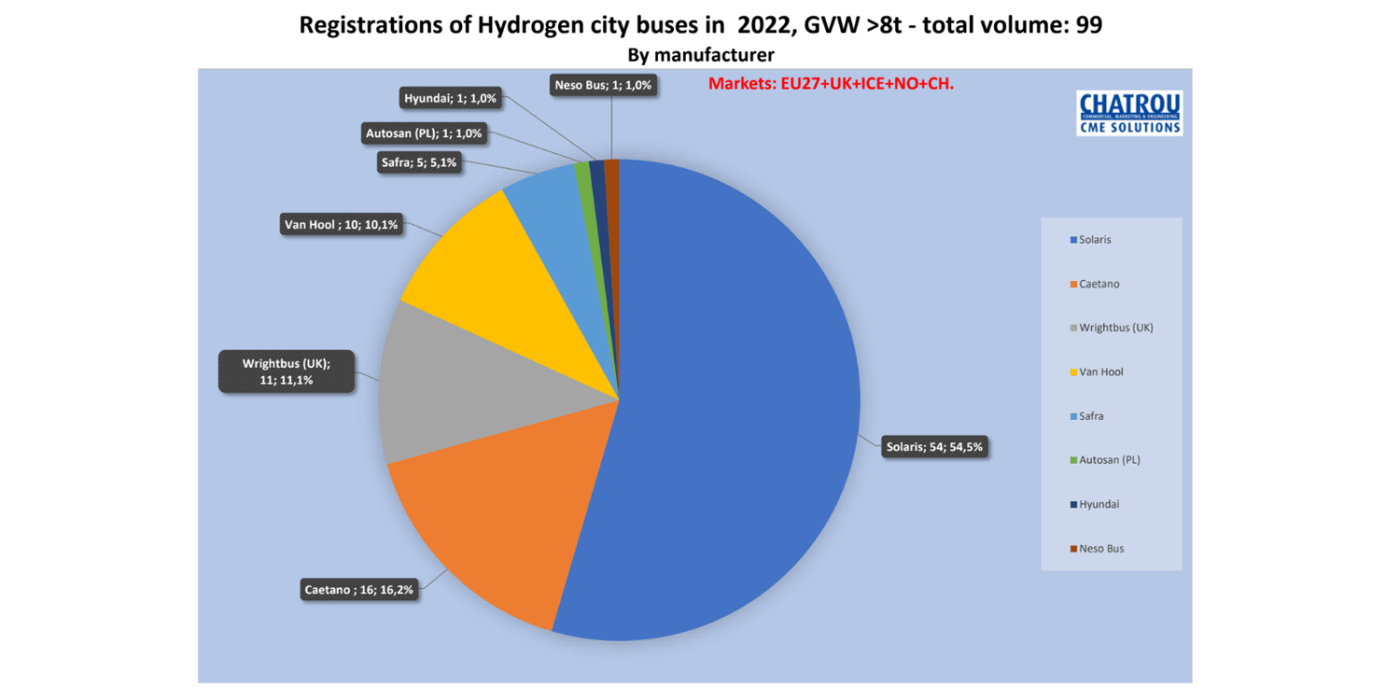
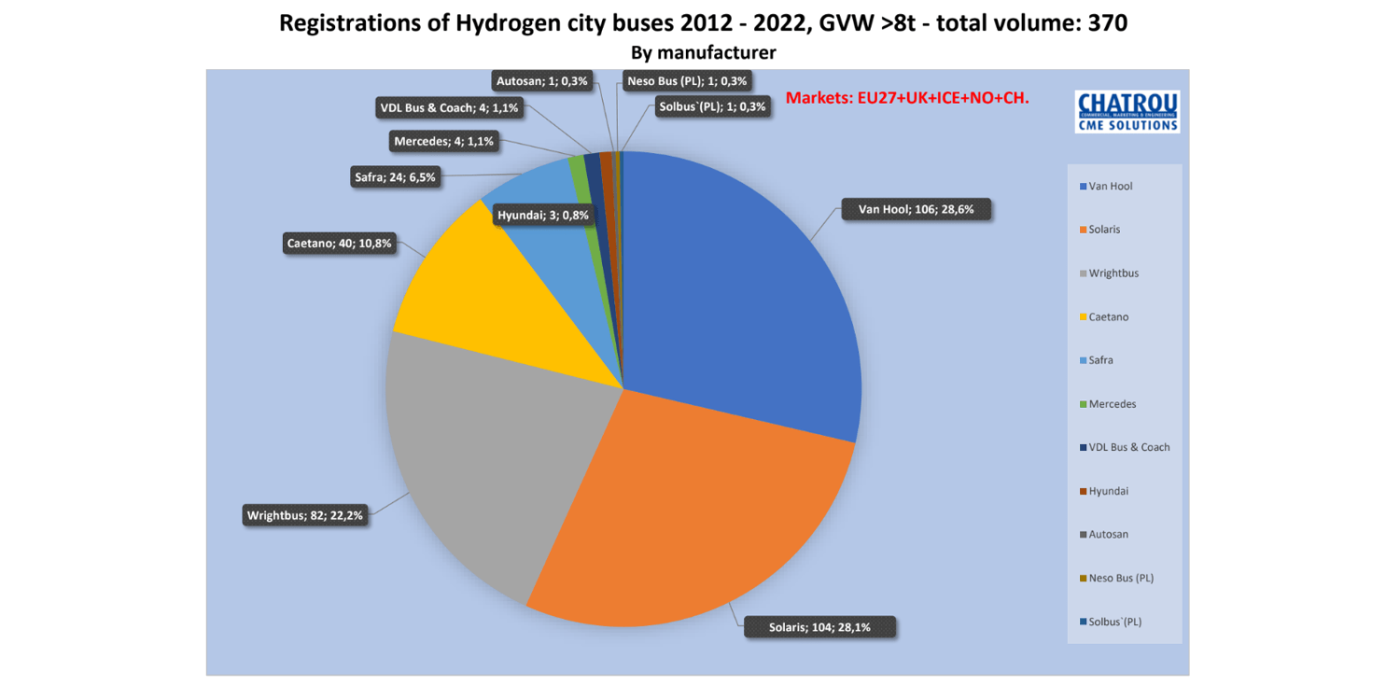
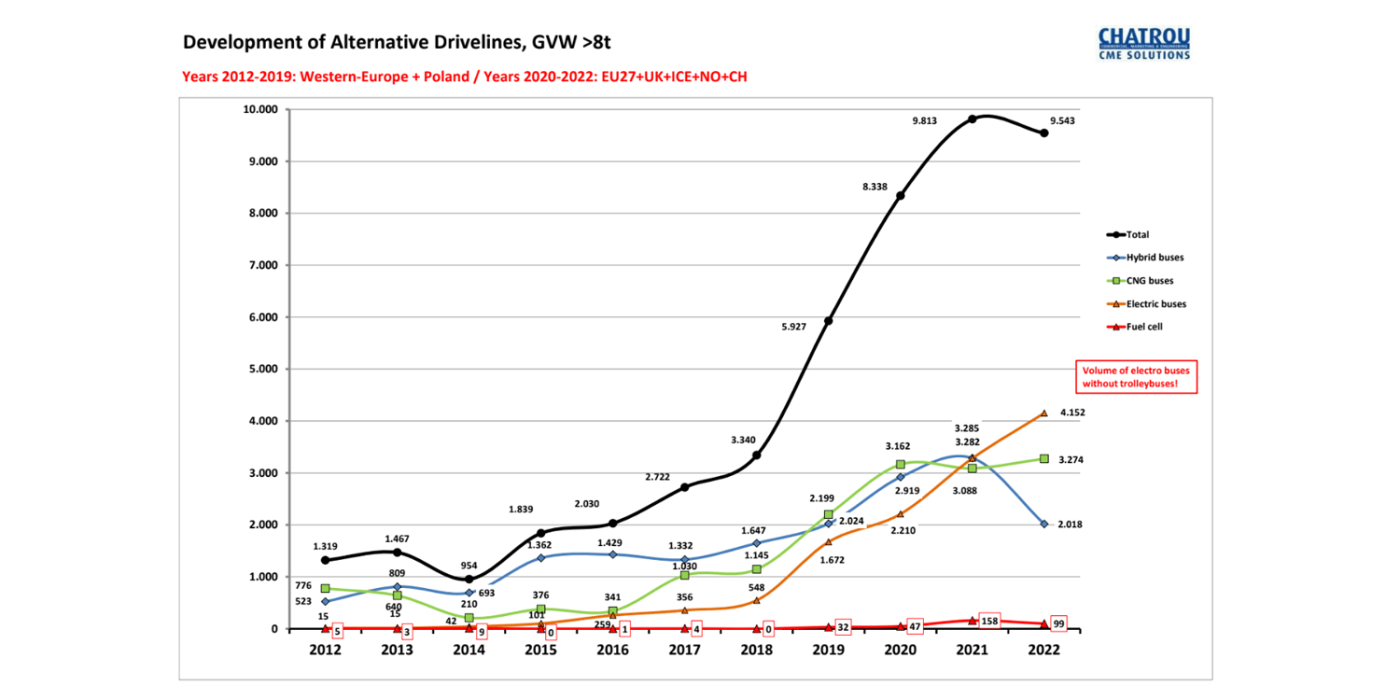
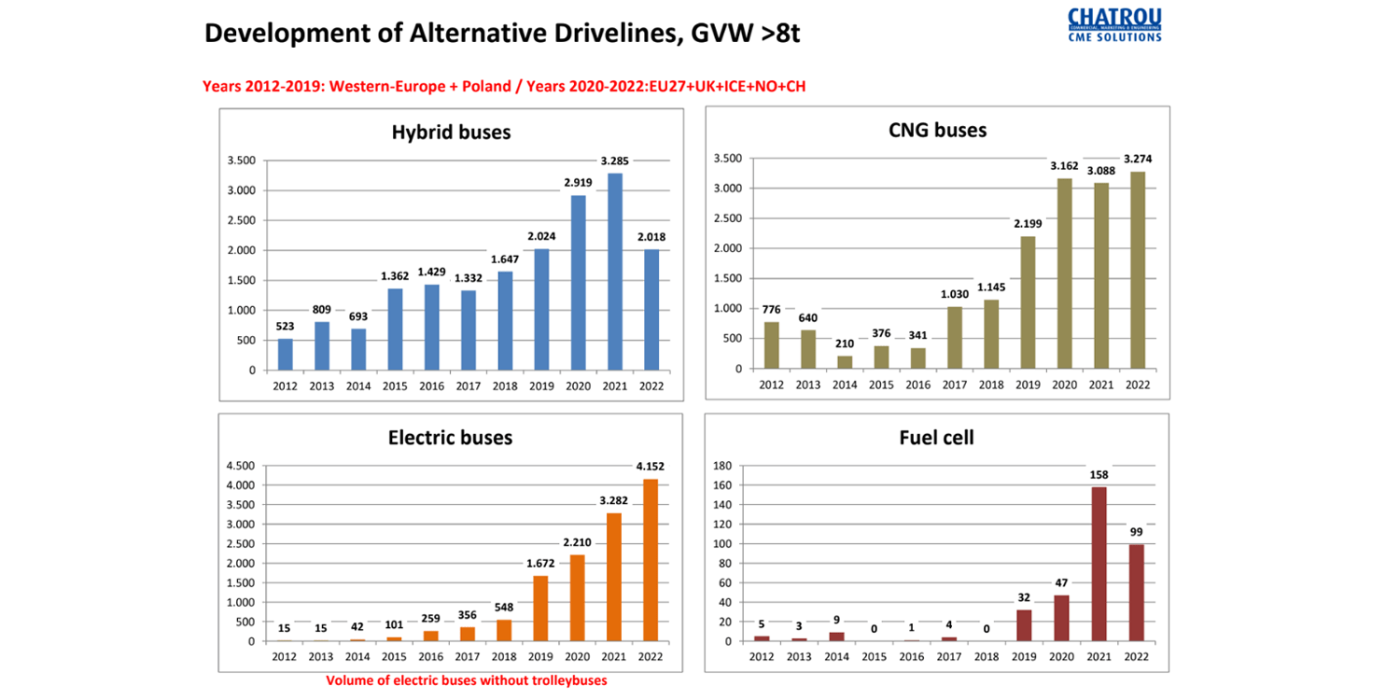
In 2020, there were 2,210 BEVs and 47 FECVs newly registered. Just two years later, in 2022, these numbers have gone up to 4,152 BEVs and 99 FCEVs! The number of battery electric city buses (BEV) increased from 3,282 in 2021 to 4,152 in 2022, an increase of +26.1 per cent. The number of newly registered city buses relying on hydrogen as an energy source is lower with 99 FCEV city buses in 2022 than in 2021, where there were 158 new vehicles for this segment. In the last ten years, 370 FCEV city buses have been registered across Europe. Van Hool leads this segment with 106 vehicles or 28.6 per cent. Solaris follows in second place with 104 vehicles (28.1 per cent). Third place goes to Wrightbus with 82 vehicles (22.2 per cent).
In Germany, new electric bus registrations (including both BEV and FCEV) in 2022 saw 296 vehicles, while Mercedes-Benz was again able to sell the greatest number of new electric buses. VDL Bus & Coach is now also a permanent fixture in second place on the bus market in Germany. The Dutch company delivered 106 new electric buses in Germany and, as was the case in 2021, holds its own in second place. There was a change in third place, with Solaris again leading the way with 70 (28 BEVs and 42 FCEVs) new electric buses, while MAN has to admit defeat, even if it is only four electric buses that distinguish the two manufacturers, as MAN was able to register 66 new electric buses.
Across Europe, the number of new electric buses (BEV + FCEV) also grew, with Wim Chatrou citing a total volume of 4,152 vehicles in 2022. The boom continues in this segment, with a further increase of almost 1,000 new electric buses compared to the previous year is impressive. With 479 new registrations in Europe, Yutong can claim 1st place, Alexander Dennis & BYD come in 2nd with 465. Mercedes-Benz managed 3rd place throughout Europe with 405 vehicles. Germany features a total of 581 new electric buses registered and, if Ebusco (90 electric buses for BVG) and Mercedes-Benz had been able to deliver the electric buses to Hamburger Hochbahn last year, 1st place would not have gone to Great Britain.
In the UK, 685 new electric buses were purchased, with France in third place with 549 new electric buses. A small surprise is Denmark: With 381 new registrations in the BEV segment, the Danes reach 4th place. More than 12,500 city buses with electric drives are now on the road in Europe!
This means that a whopping 62.5 per cent of the city buses registered in Europe today drive with an alternative powertrain. Their share is increasing from 59% in 2021, but the overall volume is declining mainly due to a lower number of new registrations in the hybrid bus segment (-38.5%).
Report by Rüdiger Schreiber, translated from German

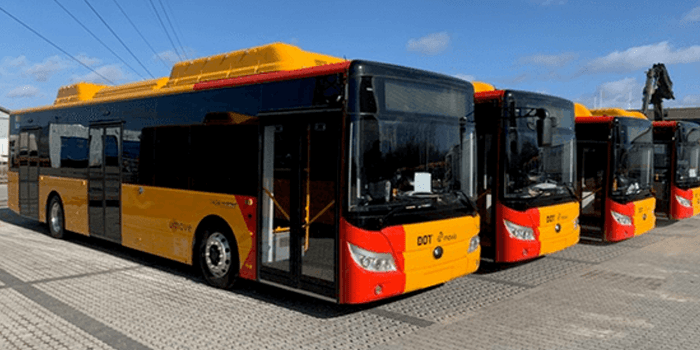

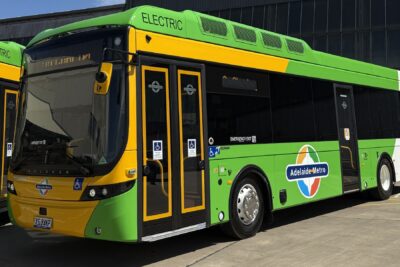

0 Comments